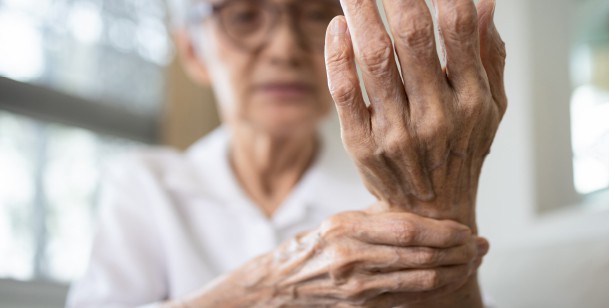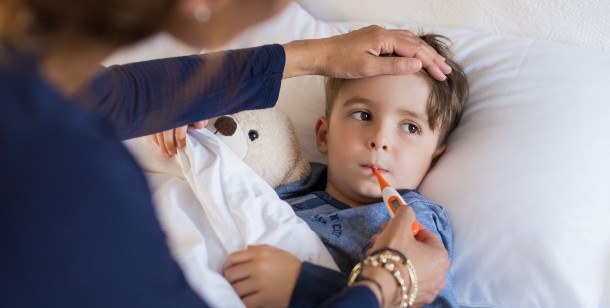The fall and winter seasons are considered a time for outdoor, cold weather fun, and holiday celebrations. However, during this time of the year, it’s good to be aware of the common illnesses that might ruin the festivities. Learning what illnesses to look out for, and how to prevent and treat them, can save you and your family a lot of trouble. Keep reading to learn more about common fall illnesses!
Affecting Adults:
While most respiratory illnesses, viral infections, and other illnesses can assault the immune system of anyone, some are more prone to one age group over another; here are some common fall illnesses suffered by adults:

The Common Cold During Fall and Winter
What: Possibly the most common fall and winter illness is the common cold! Everyone has experienced a cold before, but it can be summed up as a collection of symptoms affecting the respiratory system.
How: The common cold is normally spread through touch, but can also spread through the air through sneezes and coughs. Germs pass from person to person through physical contact, or by contact with a surface recently contaminated and bringing the germs towards the eyes, nose, and mouth.
Symptoms: Symptoms of the common cold include: sneezing, stuffy or runny nose, sore throat, coughing, and sometimes fever.
Treatment & Duration: The common cold usually resolves itself within two weeks. Sadly, there is no cure for the common cold, but over-the-counter medicine can help manage symptoms. While you recover, be sure to stay hydrated and get lots of rest.
Prevention: Wash your hands! Practicing good hygiene, keeping your distance from sick individuals, and getting lots of exercise and rest will help you stay healthy during the fall and winter seasons – an important measure that you can take against the common Fall illnesses. Be sure to see a doctor if you develop a high fever, have chest pain, or trouble breathing.

Arthritis Pain from Weather
What: Arthritis is the swelling of the joints. There are many different types of arthritis, and all of them are made worse by the cold weather, as the body constricts and puts more pressure on the swollen joints.
How: Osteoarthritis is caused by wear and tear on the joints overtime. By contrast, the more aggressive Rheumatoid Arthritis is caused by the immune system attacking the lining of the joints. While these issues can affect anyone, they are most commonly associated with old age.
Symptoms: Symptoms include: pain, stiffness, swelling, inflammation, and limited mobility.
Treatment & Duration: To prevent the cold weather from causing arthritis sufferers excess pain, one can alternate using heating pads and ice packs to cut down on swelling. There are medications available to help alleviate symptoms and pain. When the pain becomes unmanageable, contact your doctor to explore your options for treatment.

Seasonal Affective Disorder
What: Seasonal Affective Disorder, also known as SAD, is a type of depression that’s brought on by changes in the seasons, making it very specifically a winter and fall illness.
How: SAD is brought on by a lack of sunlight during the fall and winter months. A lack of sunlight can change your circadian rhythm, and lower serotonin levels. Additionally, interrupted sleep can cause a change in the body’s melatonin levels, resulting in an onset of depression.
Symptoms: Symptoms of SAD may include oversleeping, appetite changes, weight fluctuation, fatigue, problems sleeping, loss of interest, anxiety, substance abuse, or thoughts of suicide.
Treatment & Duration: If you are struggling with any type of depression it is important that you reach out for help. This can involve attending therapy or exploring your medication options with the help of a licensed medical doctor. For SAD specifically, “Light Therapy” is highly recommended. This treatment uses the exposure to faux sunlight to help alleviate symptoms.
Protect Your Children:
Young children can be especially vulnerable to common fall illnesses due to their age and underdeveloped immune system. Here’s a breakdown of two of the most common illnesses that endanger young children, so you can be equipped to prevent and treat them as needed.

Hypothermia
What: Hypothermia is a medical emergency where the body rapidly loses heat and is unable to warm itself; this results in a dangerously low body temperature which can cause organ failure and, eventually, death.
How: Hypothermia is caused by prolonged exposure to frigid temperatures or immersion in cold water. These situations cause your body to lose heat rapidly, dropping your core temperature.
Symptoms: People suffering from Hypothermia may experience the following: shivering (as the body attempts to warm itself), slurred speech, shallow breathing, weak pulse, drowsiness, confusion, loss of consciousness, and in infants, bright red, cold skin.
Please note that this condition takes hold gradually, so a person might not notice his or her symptoms. Confusion often leads to a lack of self-awareness, which may prevent children from reaching out for help.
Treatment & Duration: The number one treatment for hypothermia is to get a person’s body warm. Remove wet clothing and cover the person with blankets. Insulate the patient from the cold ground, while providing warm beverages and a dry, warm compress. Avoid heating the patient too quickly by applying direct heat: this can cause irregular heartbeats and could possibly lead to a fatality. Monitor the person’s breathing and contact a medical professional for help.
Prevention: Make sure children are properly dressed for going out in the cold. Hats can help prevent heat escaping through the head, and proper shoes will keep the feet warm and dry. It is recommended to dress infants and young children in one more layer than an adult would wear. Additionally, be sure to monitor children outdoors and be on the lookout for the symptoms listed above, having them come inside to warm themselves frequently.

The Flu
What: Influenza, commonly referred to as the flu, is a common viral infection that is often more severe than the common cold. This illness can be especially dangerous for young children.
How: During flu season, flu viruses travel through the air as droplets and can be picked up in the same way as the common cold. Person to person contact, or contact with an infected surface are also causes of the flu.
Symptoms: Symptoms of the flu can include: fever, aching muscles, chills, sweats, headache, dry cough, shortness of breath, fatigue, runny nose, sore throat, and vomiting and diarrhea (more commonly) in children.
Emergency symptoms in children include: difficulty breathing, dehydration, blue lips, severe pain, and seizures. Contact medical professionals immediately if your child’s health begins to worsen or you see any of these symptoms.
Treatment & Duration: Flu sufferers will need bed rest and hydration to recover. Symptoms usually persist for roughly seven days. However, in severe cases with high risk patients, a doctor may prescribe an antiviral drug to help combat the illness.
Prevention: The best way to fight against the flu is by getting a flu shot. While this may not prevent you from getting the flu, it will lessen the severity of symptoms and the duration of the illness. Your general practitioner can provide more information on flu vaccines.
Village Emergency Center is Here to Help
The fall and winter seasons should be filled with fun, not health issues. So, if you or a loved one is suffering from a medical emergency and need help, reach out to the emergency medical provider nearest you.
